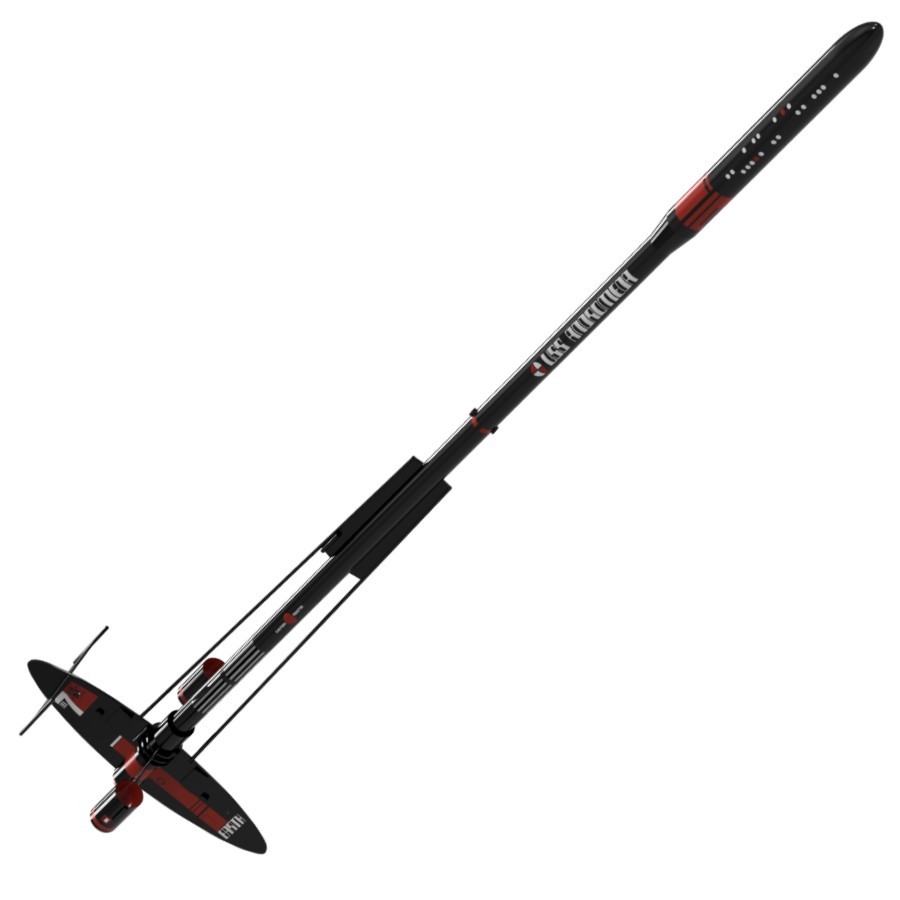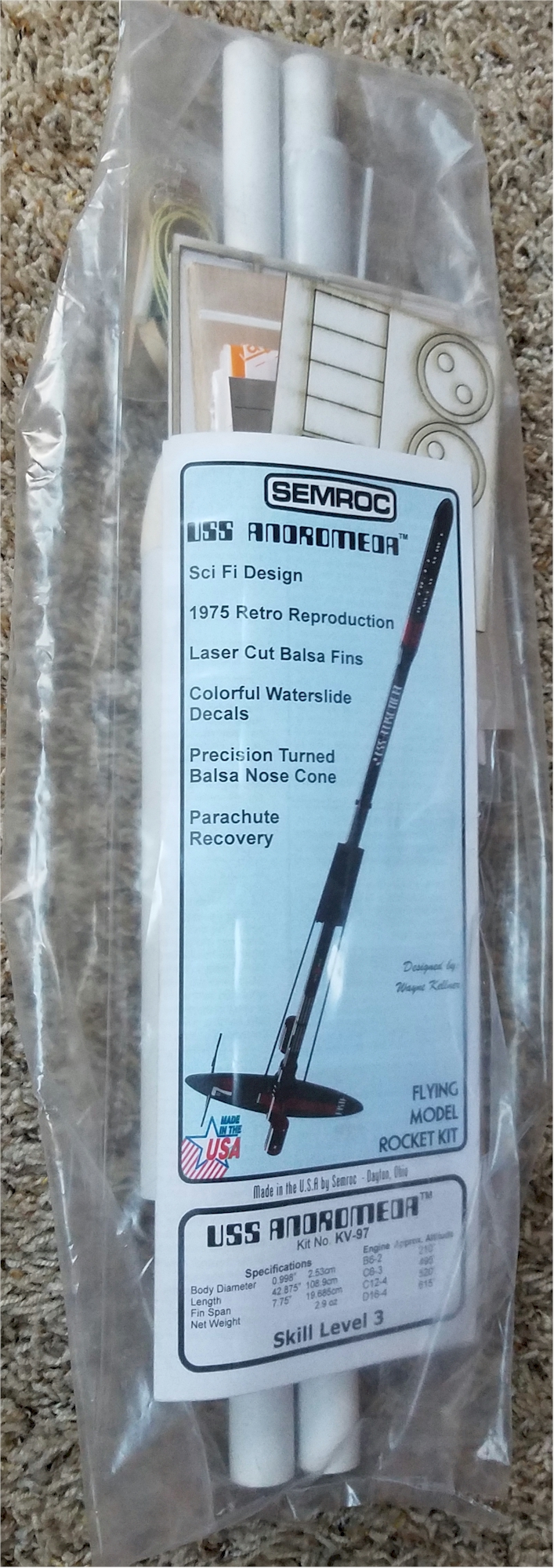U.S.S. Andromeda
Semroc kit # KV-97
 |
Photos Launches (none yet) |
Bought from eRockets.biz on 10/10/2019 for $50
 |
Photos Launches (none yet) |
SPECS:
Length: 43.3"
Diameter: .736" (BT-20)
Weight: 2.9 oz. (82.2g)
Recovery: 18" Parachute
Recommended Engines: B6-2 (190'), C6-5 (500') (I recommend a C6-3)
Skill level 3
VEHICLE DESCRIPTION:
The USS Andromeda is a 30-man exploration vehicle intended for future long-duration
space voyages during the 1980-1990 time period. It is capable of space missions of up
to five years without refurbishment. Assembled in synchronous earth orbit, the Andromeda
is a space giant of well over 2000 feet long with an overall sail height of 600 feet.
As an interplanetary exploration ship, it carries a variety of manned lander modules for
planetary excursions.
The forward crew module contains gravity living quarters as well as numerous zero-gravity
scientific, astronomical, scientific and ship control stations. The slender interconnection
body between sail and forward crew module houses consumables storage bays and ship power
units. Several one man auxiliary spacecraft stored in this section are used for extra-vehicular
duties. A small capsule-like tube elevator provides personal transit to both ends of the ship.
A secondary function of the long connecting body is to furnish isolation shielding from engine radiation.
Andromeda’s propulsion system consists of three rocket engines. The center hybrid engine provides short
duration thrust for primary orbit shaping burns. The out-board nuclear ram type engines
provide continuous burn thrust required for transit velocities. Supplementary attitude
control rockets perform all other ship axis control functions. The large elliptical sail
area may be used to capture solar wind as an emergency power source. In this power
configuration, the ship can tack at slow coasting speeds, much like early sailing vessels.
Deep space laser communication array is housed atop the sail structure.
As presently conceived, a typical mission would require a crew complement of 30 astronaut-scientists.
Flown by a mission commander and seven astronaut/officers the remainder of the crew would
consist of scientific, technical and medical specialists.

